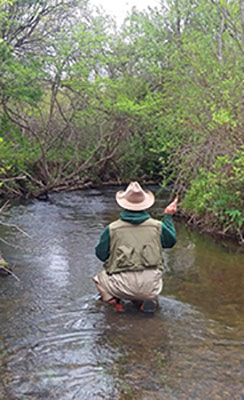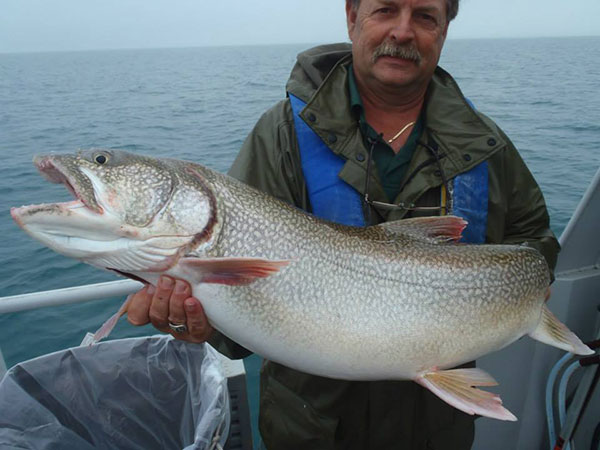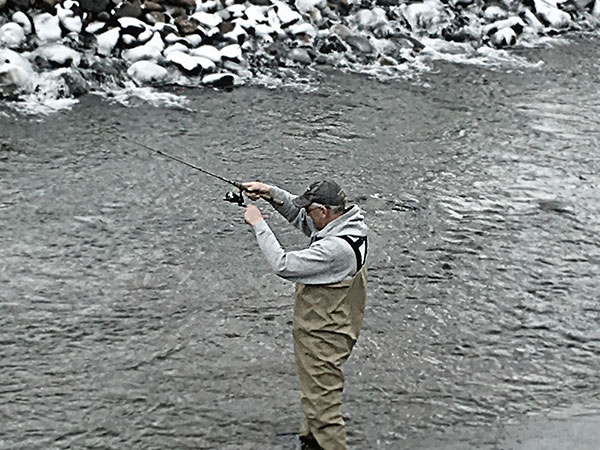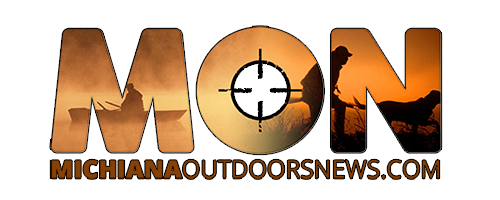- Details
(Provided by MDNR)
 Michigan's The latest additions to the Michigan DNR online Trout Trails application now ensure quality trout streams and lakes are pinpointed for anglers to visit throughout the state of Michigan.
Michigan's The latest additions to the Michigan DNR online Trout Trails application now ensure quality trout streams and lakes are pinpointed for anglers to visit throughout the state of Michigan.
Trout Trails is an interactive tool featuring fisheries biologist-verified trout waters that are often lesser known, but considered outstanding destination points.
This is the third phase of Trout Trails, with nearly 100 additional sites added to the application. That brings the total number of locations to nearly 300. These newly added sites feature lakes and streams located in the eastern, central and western Upper Peninsula and northern Lower Peninsula.
The DNR will continue to add more locations over time to add to the statewide coverage of these types of waters.
- Details
(Provided by MDNR)
The Michigan DNR, in partnership with Michigan Sea Grant, Michigan State University Extension, the U. S. Geological Surveys Great Lakes Science Center, the National Oceanic and Atmospheric Administrations Cooperative Institute for Limnology and Ecosystems Research, and local fishery organizations, will participate in several regional workshops the next two months highlighting research and information about the fisheries of Lake Erie, the Detroit River, Lake Huron, Lake Michigan and Lake St. Clair.
Workshops are free and open to the public, and will provide valuable information for anglers, charter captains, resource professionals and other community members. The workshops will focus on fish populations and angler catch data, native species, forage fish surveys, invasive species, updates on fisheries management activities, and other related topics.
- Details
(Provided by IDNR)
 Indiana Lake Trout Bag Limit Increases in April
Indiana Lake Trout Bag Limit Increases in April
Indiana is changing the daily bag limit for lake trout in Lake Michigan.
On April 1, the limit will increase from two fish per day to three fish per day under an emergency rule, while waiting for a permanent rule to be approved.
Indiana biologists used input from multiple user groups in crafting this regulation.
The increase will put Indiana in sync with Michiganís bag limit. Since many Indiana boaters routinely fish in both states during the same trip, having the same bag limit for both states will make fishing less complicated.
Additionally, the increased bag limit will offer more harvest opportunity for lake trout in the spring and fall, when they are readily available in Indiana waters. The nearshore fishery for lake trout is becoming more popular.
Biologists are confident the lake trout population can sustain the additional harvest pressure. The lake trout population has been increasing in the southern basin due to the changing Lake Michigan ecosystem.
- Details
(Provided by Creation Outdoors)
 Surefire Spring Trout Strategies
Surefire Spring Trout Strategies
Late winter is a time of transition for trout and the anglers who pursue them.
Admittedly, figuring out productive patterns while shifting from ice fishing to open-water mode can be intimidating, but those who know where and how to tackle spring trout can enjoy some of the year’s best fishing.
“Rainbow trout are a great example,” says veteran trout guide Bernie Keefe. “They’re active, hungry and willing to bite.”
Keefe targets tributaries and lakes in the Colorado high country a short cast west of Denver, but his spring rainbow strategies produce results in systems across the continent.
One part of his game plan hinges on the spring spawning run.
- Details
(Provided by MDNR)
As Michigan inches toward spring, anglers may want to plan an outing to target coho salmon in Lake Michigan. The coho season is open all year but activity really starts to pick up this month.
Coho salmon have a pretty consistent migration pattern every year, starting in the southern portion of Lake Michigan and moving north into New Buffalo, St. Joseph, South Haven and sometimes Muskegon before they cross the width of the lake for much of the summer.
In 2016, anglers who ventured out into 200 feet of water, which can be more than 10 miles offshore from most ports, found coho feeding on shrimp-like species called "mysis." Mysis populations appear to be doing well in this deeper water, and coho respond favorably when feeding on this nutrient-rich food source.





